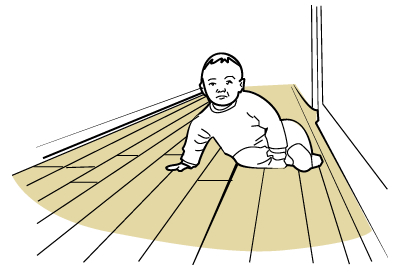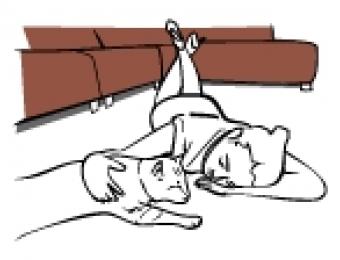
Floors can affect people’s health in a number of ways - some of which aren't that widely known, some of which apply to all sorts of floors, and some of which are a bit misunderstood.
Dust mites and allergies
It is important to stress from the outset that no matter what your flooring type, the best way to combat any dust build up, allergens from mites and other allergic triggers is through regular and thorough cleaning. A High Efficiency Particulate Air (HEPA) filtered vacuum taken through the house as often as necessary will keep just about any flooring surface dust-free. Provided that you vacuum often enough, allergic triggers like dust and mites should be kept under control. In most cases, a weekly vacuum is all that's needed.
The biggest contributors to allergic reactions where floors are concerned are dust mites, pet hair and airborne particles. Dust mites can be a particular problem where carpets are concerned, as they are very difficult to get rid of once they have a foothold. Having said that, they can exist on any floor surface provided the conditions are right. While the greatest concentration of dust mites is usually found in bedding, the greatest population is usually found on the floor.
New carpet fumes - VOCs
Some new carpets will also give off toxic fumes from various adhesives, sealants and dyes used in their production. These fumes come from 'Volatile Organic Chemicals' (or VOCs), and while most of them are baked off the carpet before it leaves the factory, in some cases newly installed carpets will release fumes during and immediately after installation. 90% of the VOCs emitted by carpets should have dissipated within the first two days of a new carpet installation, but it's widely recommended that the house be well ventilated for at least 72 hours after a new carpet's installed. Those with particular sensitivity to VOCs may want to be elsewhere during and immediately after the installation of a new carpet.
Carpets and carpet adhesives emitting fewer fumes will likely use this as a key advertising point, so if you do have concerns about having to live in your home while the carpet is installed, you may wish to look for this in the product descriptions.
Further information on carpets and VOC emissions is available on the Carpet Institute of Australia's website.
Linoleum and other low-allergenic options
One of the safest flooring choices is natural linoleum – not to be confused with vinyl, which is man-made. Linoleum is anti-bacterial and hypo-allergenic, very easy to clean, is flame retardant and has a soft, warm feel underfoot. This can make it an ideal choice for covering children’s play areas, kitchens and bathrooms. Cork tiles have similar qualities and can also be used in these applications provided the waterproofing seal is maintained well.
For the rest of the house, wood and even bamboo both work well as they are easy to keep completely free of dust and have the option of being covered with removable rugs if comfort is a concern.





